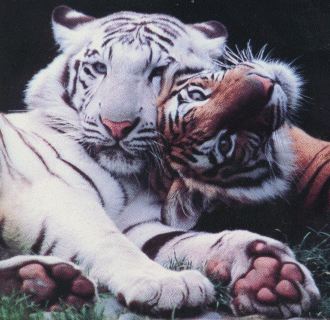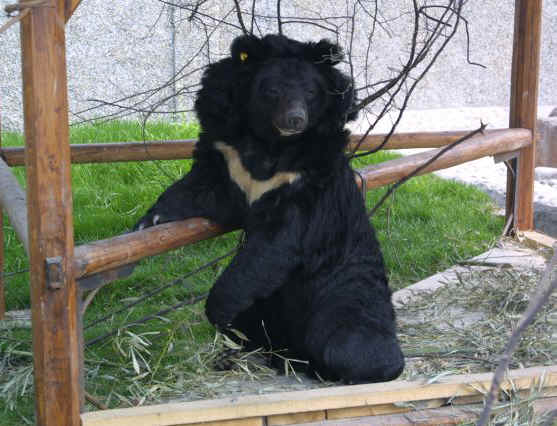![]()
Medicinas Tradicionales y Pérdida de Biodiversidad
Somos muchos los ciudadanos que a la búsqueda de una vida más sana hacemos uso de terapias y medicinas alternativas antes de contaminarnos con fármacos, cuyos efectos secundarios o indeseados también atentan contra la salud. No os explicaré detalladamente mi caso. Tan solo comentaré que, ante un grave error médico tras una operación quirúrgica, se me recetó uno de esos medicamentos de la farmaindustria, que si no es por mi hermana (administradora del Blog Salud Pública y algo Más) hubiera terminado por llevarme al “otro barrio” en dos o tres días (y eso que ella me administró la mitad de lo que recomendaron los señores doctores). Con tal motivo, apeló al uso de prácticas y productos procedentes de otros países y culturas (que también sabe de eso). Existe una clara e indiscutible relación entre aquellos ciudadanos que buscamos una vida y un ambiente más saludable y los que recurrimos a estas medicinas alternativas como la china. Obviamente, es imperativo acudir a expertos cualificados y no a indeseables ignorantes sin escrúpulos, que viven a costa de la buena fe de los más desesperados y/o de los ignorantes. Ahora bien, lo que no debemos soslayar es que diversos productos utilizados para tales fines proceden de animales salvajes y plantas silvestress. El crecimiento demográfico y la extensión (“moda”) de tales alternativas para la salud están expoliando la biodiversidad induciendo la extinción de especies. No es lo mismo, un uso moderado por una población rural de escasos habitantes que la comercialización industrial (aunque en sus orígenes sea furtiva) de tales “compuestos” a escala global. Y una vez más, el problema deviene en pandemia.

Muchos animales y plantas se encuentran en riesgo
de extinción por los ingrediente requeridos por las
medicinas tradicionales como la China. Fuente: Ayusman
La prensa nos suele advertir del riesgo que sufren ballenas, tiburones y en general los recursos pesqueros a consecuencia de su sobreexplotación. En ciertos países se consume demasiado pescado, ya sea por tradición o moda. Veladamente, acusamos a japoneses y ciudadanos de otros países que sus hábitos de consumo ponen en riesgo la biodiversidad. Desde luego en esta materia España no se queda a la zaga. Los mismos médicos recomiendan su consumo con vistas a alcanzar una alimentación más saludable. Sinceramente, yo comienzo a dudarlo en vistas del aluvión de noticias que nos llegan sobre la contaminación que padecen muchas especies acuáticas a consecuencia de este mundo globalizante y bobalizante. Por tanto, al paisano le llegan noticias contrapuestas. Ahora bien, la salud es lo primero. Obviamente debemos limitar sobremanera el consumo de pescado si deseamos seguir probándolo en el futuro. Si, eso que soléis llamar sustentabilidad y en la que yo no creo que se pueda alcanzar por mucha bravata de políticos, colegas, empresarios, etc.

Sin embargo, nos olvidamos señalar que el creciente consumo de las medicinas tradicionales también se genera los mismos devastadores efectos. Uno no puede ir de ambientalista y mirar para otra parte cuando se nos acusa de ser directos responsables. Tan solo expondré una noticia aparecida el 12 de marzo en el Wall Street Journal acerca de la inexorable extinción de un Oso Chino, como un mero ejemplo de las abundantes notas de prensa que he leído sobre el tema en los últimos tiempos de este país asiático, pero que también acaecen en otros. Por tanto, os rogaría a todos que compréis productos en cuyas etiquetas se indiquen los compuestos y que leáis en la Web (siempre que sea posible) la procedencia y el riesgo que corre el(los) ser(es) vivo(s) en cuestión. ¿Es mucho pedir?.
¿Será posible que por comer de un modo natural y cuidar nuestra salud compartamos el dudoso honor de ser tan responsables como a los que acusamos de la pérdida de biodiversidad? ¡Pues me temo que va a ser que sí!.
Juan José Ibáñez
China moon bear agony persists despite successes
by Staff Writers: Chengdu, China (AFP) March 11, 2009
One by one, 13 sick and traumatised Asian black bears squeezed into tiny cages are pulled from a truck, a lifetime of agonising torture now over. The bears, brought to a rescue centre in southwestern
Yet these animals are the lucky ones.
An estimated 7,000-10,000 moon bears, so-called for the pale crescent across their chests, still languish in bile farms across China. They are victims of a brutal trade that, despite some successes by activists, persists in a country where respect for animal welfare is low and a sizable market for the bile remains. «You look at these animals with absolute horror, wondering how they’ve ever survived this long,» said Jill Robinson, a Briton who heads the Moon Bear Rescue Centre, carefully offering a new bear chunks of fruit on a wire hanger.
While the efficacy of bile is questionable, it remains popular in China and other Asian countries for treating fevers, liver disease and eye problems. The methods for obtaining it have enraged animal welfare activists worldwide.
Bears are confined for life in cages barely big enough to hold them while the bile produced by their gall bladders is drained through catheters crudely inserted and kept permanently open.The animals typically arrive at the centre with paw tips chopped off and teeth knocked out by their owners and suffer a range of problems linked to infection and prolonged confinement.
Robinson’s Hong Kong-based Animals Asia Foundation (AAF) signed an agreement with
«It’s been a slower process than we would have hoped,» Robinson admits. Bile farming took off in the 1980s, officially encouraged as an alternative to hunting wild animals, but no laws govern it. Bile demand and habitat loss have cut the bears to as few as 16,000 in the wild, according to the Worldwide Fund for Nature. They are now considered «vulnerable» by the International Union for Conservation of Nature. While bile farming is legal in
Nevertheless, there is widely believed to be a large illegal export trade and pharmacies and departments stores throughout China openly sell bear bile products. Activist campaigns have helped shut hundreds of farms in
The government has previously stressed its promotion of what it says are less painful methods of extracting the bile, though Robinson says they are no better than the crude catheters of the past. Grace Ge Gabriel,
Instead, it is pushing for anti-cruelty legislation. China has a wildlife protection law widely viewed as inadequate, but no other animal protection laws, she said. «That’s the crux of the situation (in China). Animals are viewed only as a resource to be exploited,» she said.
Yet Robinson is buoyed by what she calls a slowly growing animal welfare awareness in
But the formerly anti-social Franzi has changed since the centre introduced her to Rupert, a brain-damaged bear who has become her «boyfriend» and has taught her how to play again, Robinson says.
